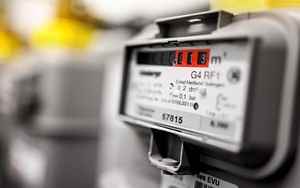(Finance) – 2021 was the year of the great rebound of consumption energetic with an 8% growth compared to 2020, despite the unprecedented increase in prices of electricity And gas. This is what emerges from theQuarterly analysis of the Italian energy system ofAENEAS which also highlights the growth in emissions of CO2 (+ 8.5%) – with the recovery of 70% of those “lost” in 2020 due to the pandemic – and the sharp worsening (-27%) of the ISPRED index, developed by the Agency to measure the energy transition on the basis trends in prices, CO2 emissions and security of supply. Furthermore, the share of renewable sources was below 19% of final consumption, down by more than one percentage point compared to the maximum reached in 2020.
“Last year about 80% of the energy consumption that the pandemic crisis had precipitated was ‘recovered'”, he underlines Francis He croaked, the ENEA researcher who coordinates the analysis. “More than half of this recovery took place in the second quarter of 2021, but growth remained strong also in the second half of the year, with + 7% in the third quarter and + 6% in the fourth. The evolution of energy consumption has basically followed a trajectory consistent with that of the guiding variables of energy demand, ie GDP, industrial production and climate throughout 2021 ”, adds Gracceva.
At the level of pricesin the last quarter of 2021 there was a leap unprecedented: that of gas the TTF stood at around € 100 / MWh compared to € 20 / MWh in the first quarter (+ 400%), while those of electricity on the European stock exchanges followed suit, with the PUN growing by 300% in the same interval of time (from 60 to 240 € / MWh). These increases have progressively passed on to final consumers, albeit partially due to the exceptional sterilization measures carried out by the Government. In IV quarter 2021 consumer prices in Italy grew about double the EU average increase (electricity[3] + 30%, gas + 40%). “In the first two months of 2022, the growth in consumer prices of electricity and gas is estimated at around + 70% trend, about double the EU average increase. This has already resulted in a sharp slowdown in the economy and in energy demand, which from the first partial data we observe is growing by around 2% in the first quarter of 2022, when instead in the last three months of 2021 we had recorded a + 6% “, he comments He croaked.
In terms of sources primary, 40% of the increase in consumption in 2021 is attributable to oil, over 30% to natural gas, almost 20% to electricity imports and the rest to solid fuels. The question of Petroleum, while still remaining significantly below pre-Covid levels, it grew by 10%, with a recovery of about 50% of the contraction recorded in 2020. Strong increase also for gas consumption (+ 7% on 2020), which does not they only exceed the 2019 levels (+ 2.4%) but are at the maximum value of the last ten years. Strong recovery in net electricity imports (+ 30%) and significant increase in coal consumption (+ 10%), especially in the thermoelectric sector, even if they are still decidedly below pre-Covid levels (-15%).
The increase of emissions of CO2 (+ 8.5%) is primarily attributable to transport for a share of over 50%, followed by civil (20%), electricity generation (15%) and industry (8%). In the case of transport, emissions increased overall by 15% compared to 2020, while the other sectors recorded increases of between 5 and 6%.
Although the drop in ISPRED is linked to the worsening of all three benchmarks – safety, prices and CO2 emissions – the component decarbonization had the most significant negative impact (-45%). On the security side of supplies, the winter just ended has shown daily peaks for maximum historians due to the demand for gas in the thermoelectric sector, while the relatively mild climate slowed down the demand for the residential sector. “As far as safety is concerned, the indicators relating to the adequacy of the electricity system and the high dependence on natural gas imports, an Italian characteristic that is not easy to overcome in the short term, are also reasons for attention”, concludes Gracceva.
In 2021 the deficit commercial Italian in the sector of low-carbon technologies, as already happened in 2020. The sectors with the greatest dependence on foreign countries are lithium-ion accumulators (with a balance approaching one billion euros), plug-in hybrid vehicles (deficit of 600 million euros) and photovoltaic products (which went from -40 to -400 million euros), due to a marked increase in imports of photovoltaic cells. In the electric vehicle sector, on the other hand, a possible positive trend seems to be emerging, because exports have gone from about 270 to 780 million euros, with a net balance that is only slightly negative.
The quarterly analysis also analyzed the trend of expense public in Research energy between 2016 and the first phase of the pandemic crisis of 2020, with a growth of 10% in Italy, about a quarter of that in Germany.
